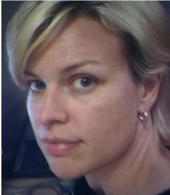The Tools You Use To Do The Job Define What You Build
It's Sunday morning, I've got 45 minutes before I need to head up to the city for morning meditation. I'm listening to 'Bootie 5.05' track 3 'Stevie Wonder vs. The Clash' and I freaking love it.
Mashups are a guilty pleasure of mine and San Francisco's mashup scene is a great place to indulge. Last weekend I attended Bootie SF, a monthly dance party featuring 'bootleg and bastard pop'. It was a *blast*, that I shared with an amazing mix of people who all seemed to want to dance. And dance we did, sweat dripping from brows all night long.
I am continually amazed and dumb struck by technology's latent influence on music. Having grown up studying music from a traditional and jazz theory vantage point and listening to new wave, industrial and hip-hop there was a big disconnect between the learned and the loved. Little did I know at the time that the chasm that lay between the two was the language of technology.
Bottom line, the tools used to create the music define the form and aesthetics of the music itself.
A Wikipedia search on 'mashups' redirects to the term 'bastard pop' and provides this brief definition followed by history:
"Bastard pop is a musical genre which, in its purest form, consists of the combination (usually by digital means) of the music from one song with the acapella from another. Typically, the music and vocals belong to completely different genres. At their best, bastard pop songs strive for musical epiphanies that add up to considerably more than the sum of their parts."
This form of musical expression wouldn't be possible without the advent of the MP3 file format, digital audio editting and mixing tools like Acid and ProTools and last but not least let us not forget the personal computer.
Suffice it to say, we're a long way from the harpsichord and Bach's Well-Tempered Clavier.
It's Sunday morning, I've got 45 minutes before I need to head up to the city for morning meditation. I'm listening to 'Bootie 5.05' track 3 'Stevie Wonder vs. The Clash' and I freaking love it.
Mashups are a guilty pleasure of mine and San Francisco's mashup scene is a great place to indulge. Last weekend I attended Bootie SF, a monthly dance party featuring 'bootleg and bastard pop'. It was a *blast*, that I shared with an amazing mix of people who all seemed to want to dance. And dance we did, sweat dripping from brows all night long.
I am continually amazed and dumb struck by technology's latent influence on music. Having grown up studying music from a traditional and jazz theory vantage point and listening to new wave, industrial and hip-hop there was a big disconnect between the learned and the loved. Little did I know at the time that the chasm that lay between the two was the language of technology.
Bottom line, the tools used to create the music define the form and aesthetics of the music itself.
A Wikipedia search on 'mashups' redirects to the term 'bastard pop' and provides this brief definition followed by history:
"Bastard pop is a musical genre which, in its purest form, consists of the combination (usually by digital means) of the music from one song with the acapella from another. Typically, the music and vocals belong to completely different genres. At their best, bastard pop songs strive for musical epiphanies that add up to considerably more than the sum of their parts."
This form of musical expression wouldn't be possible without the advent of the MP3 file format, digital audio editting and mixing tools like Acid and ProTools and last but not least let us not forget the personal computer.
Suffice it to say, we're a long way from the harpsichord and Bach's Well-Tempered Clavier.


0 Comments:
Post a Comment
<< Home